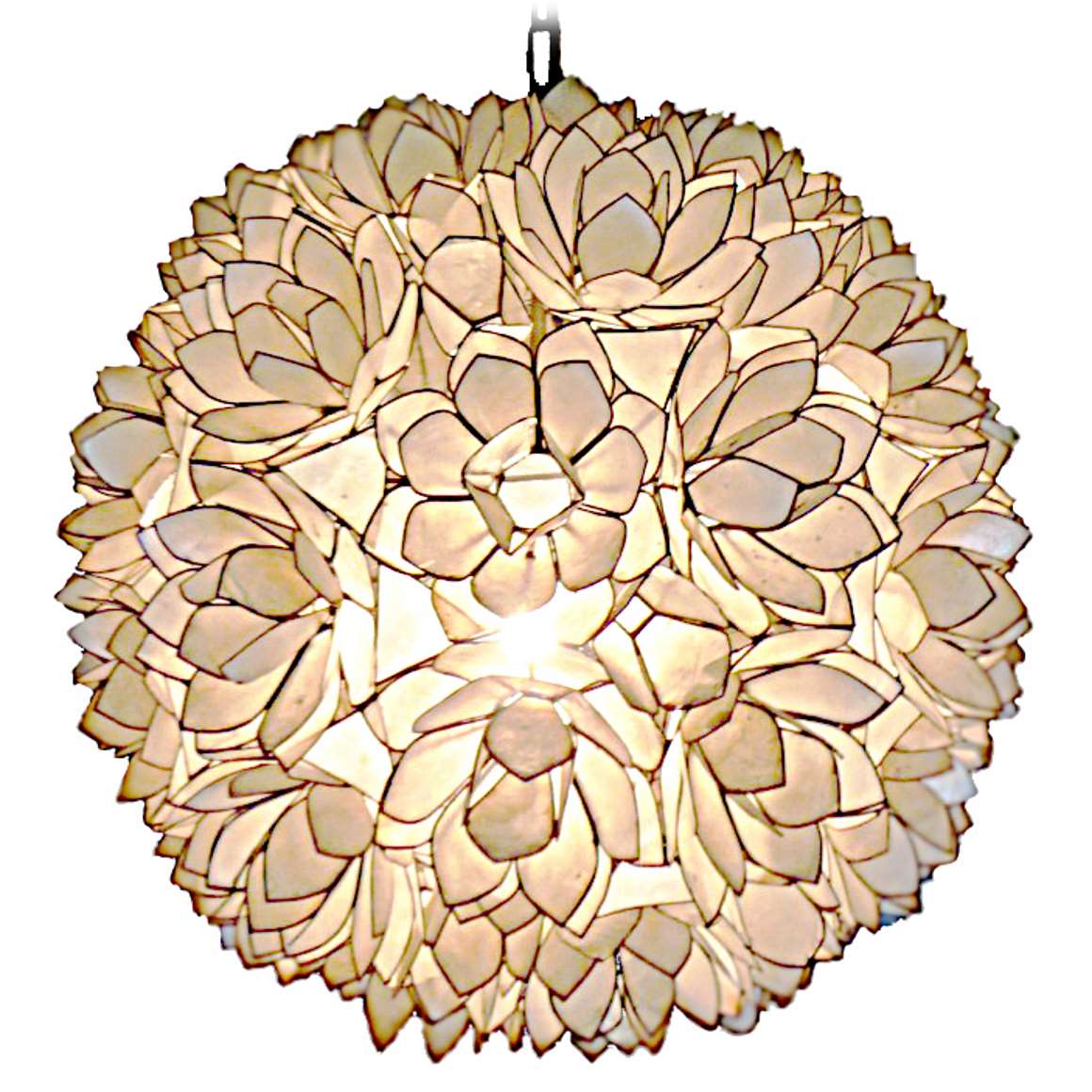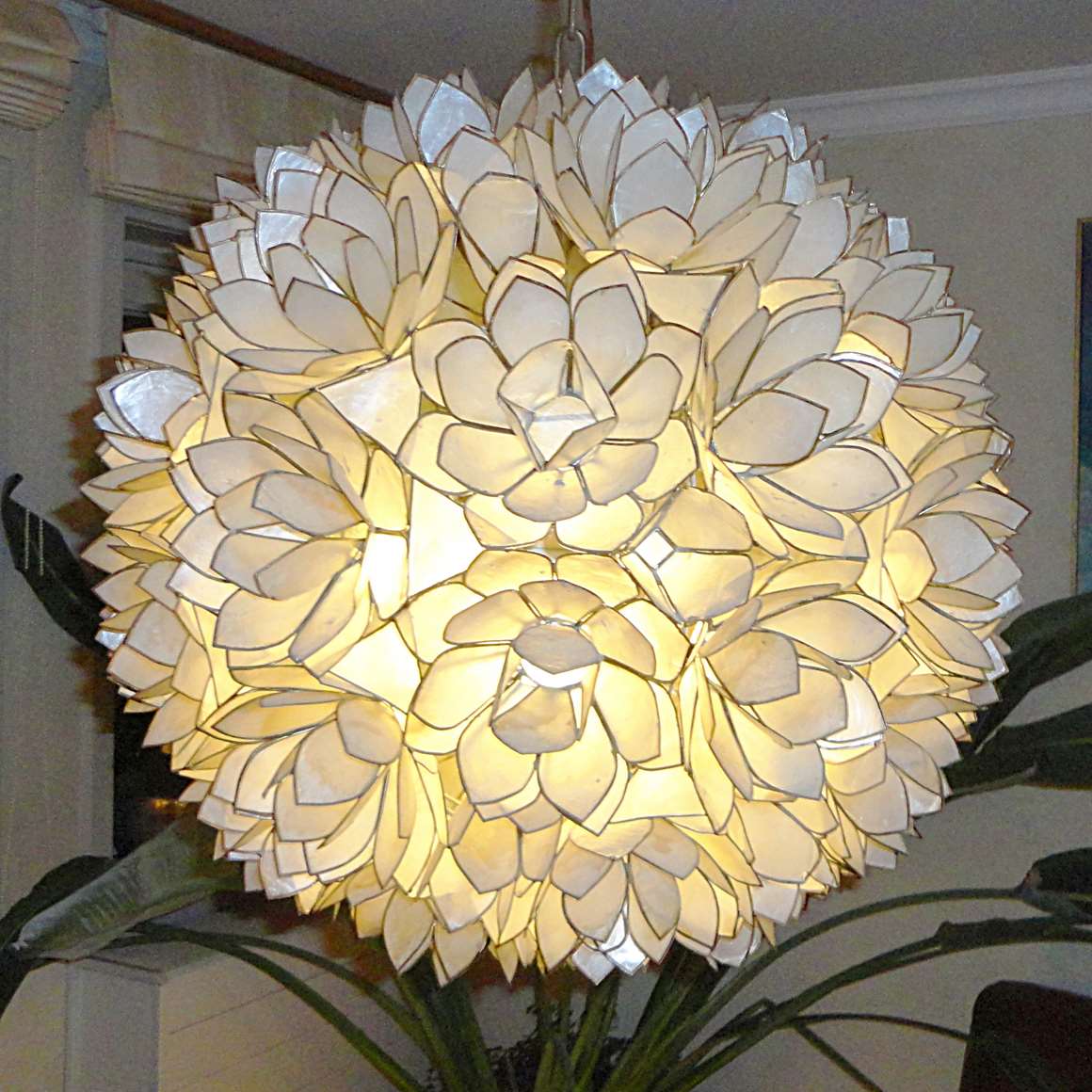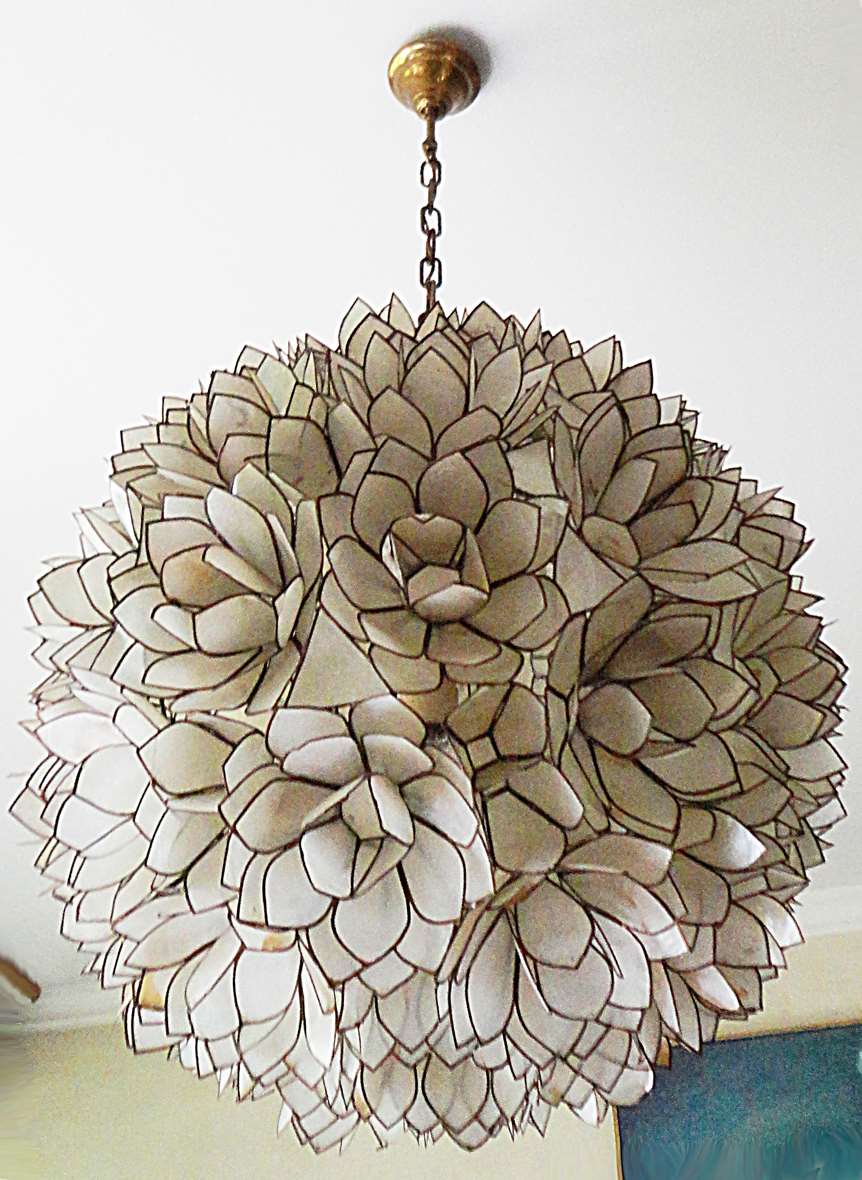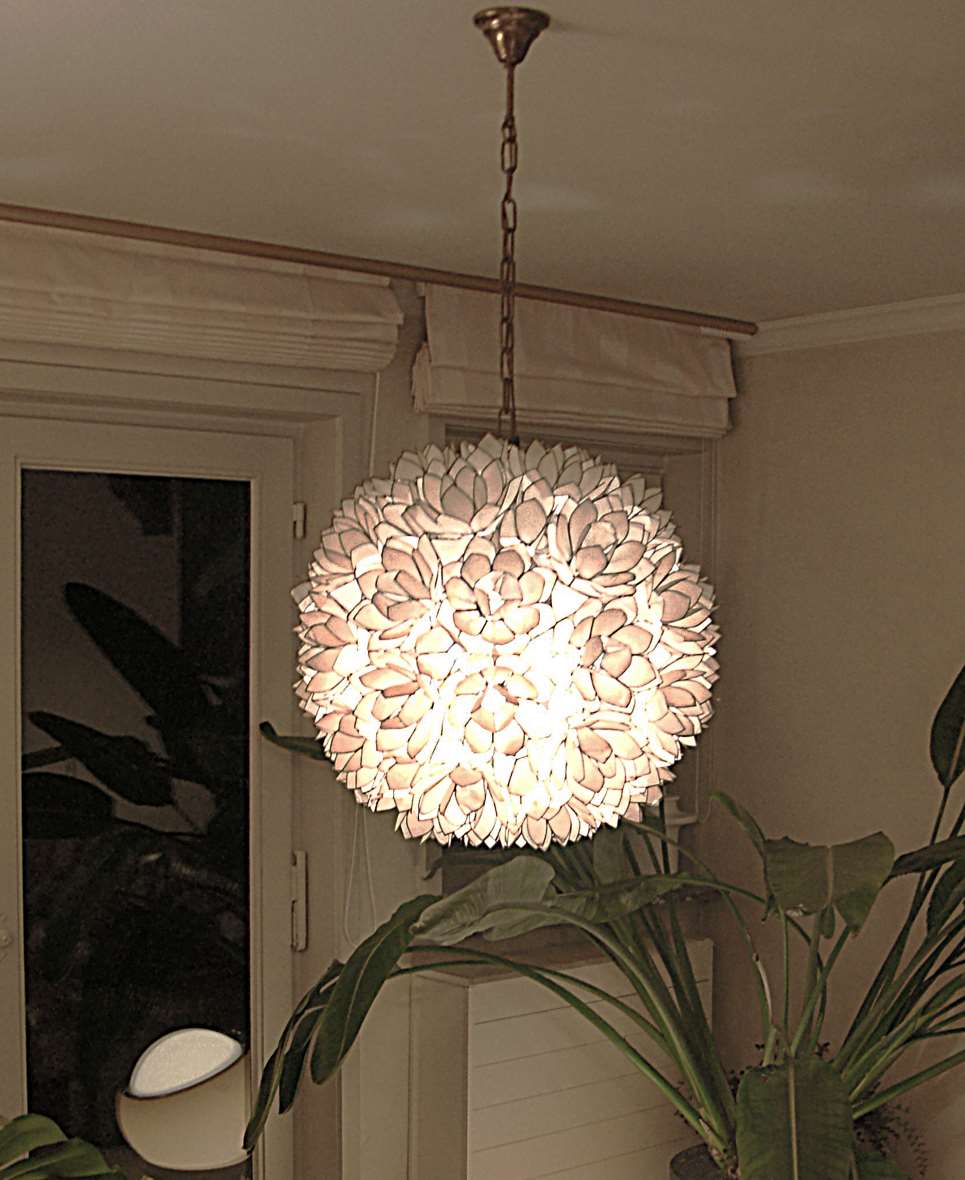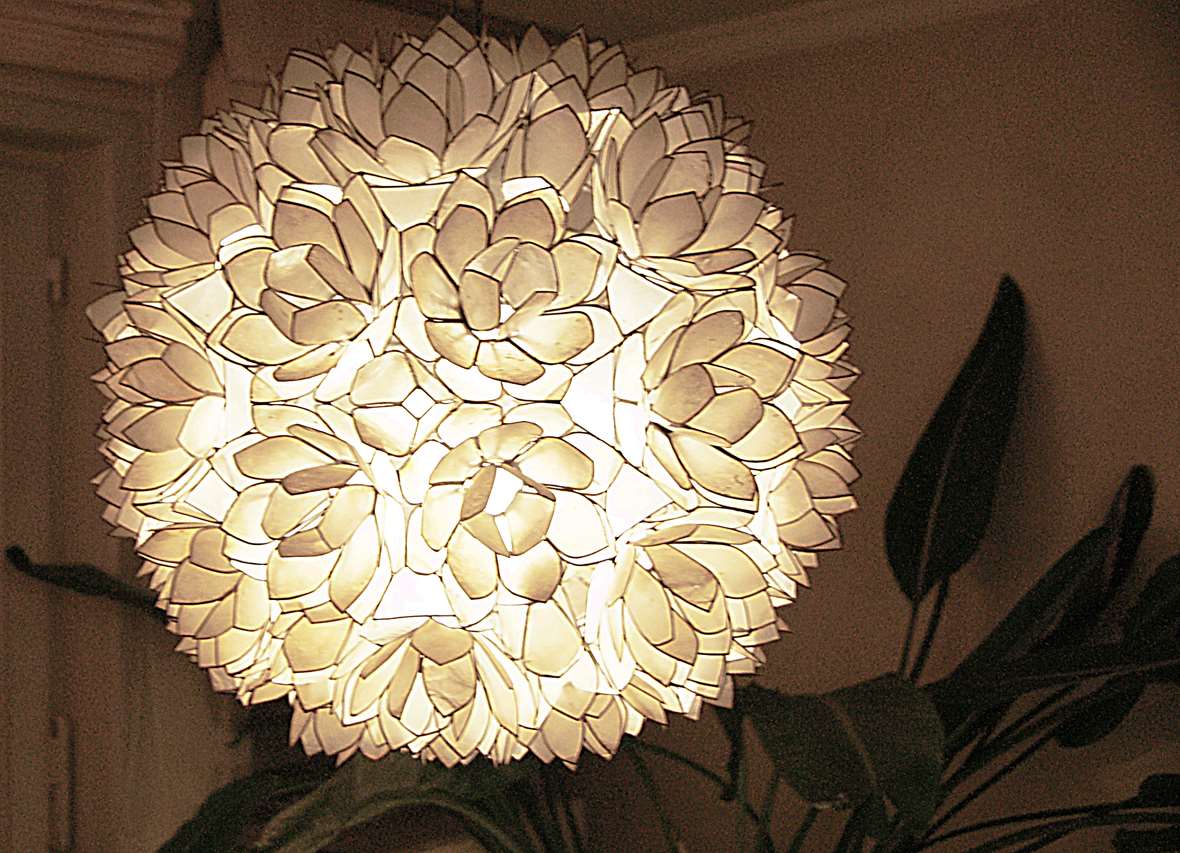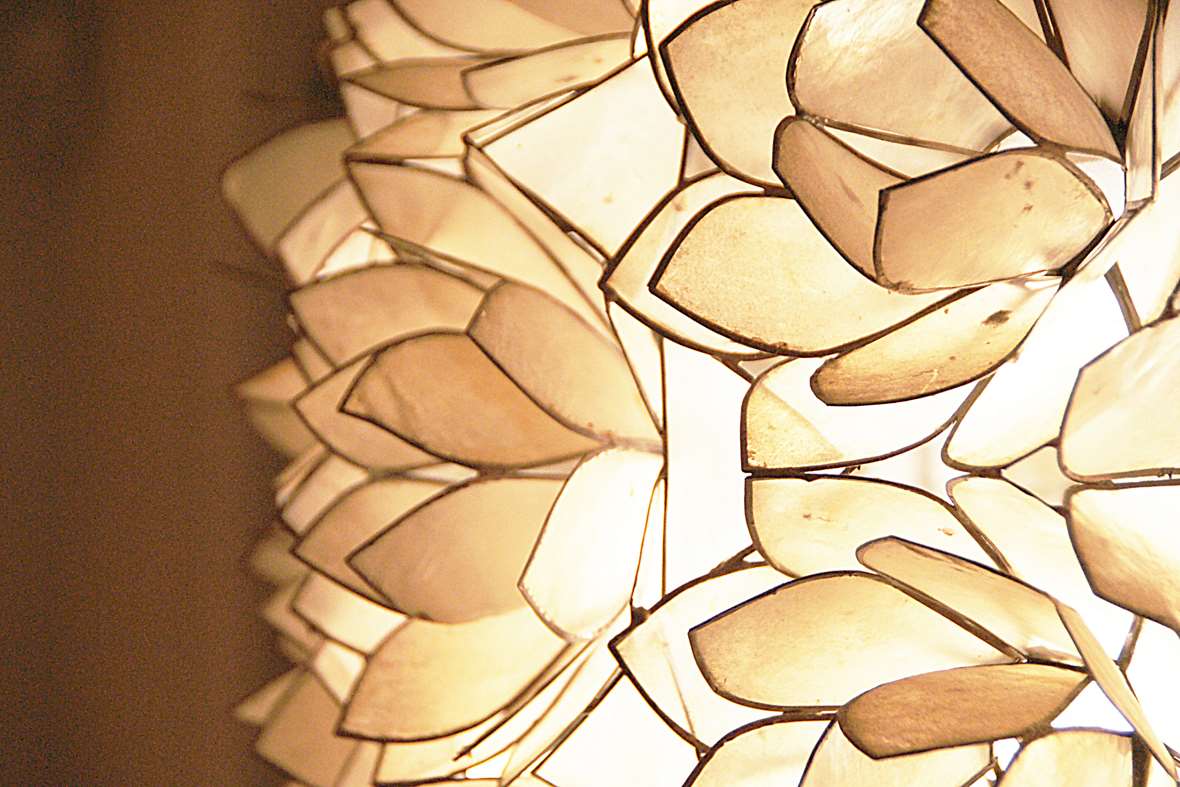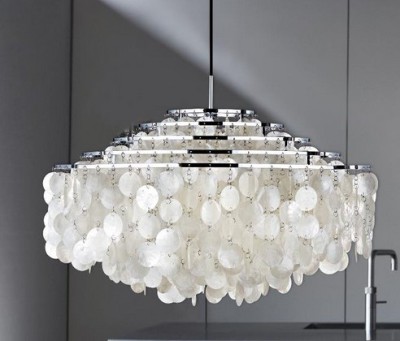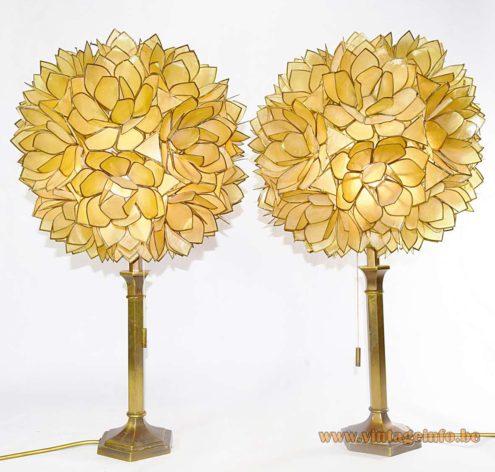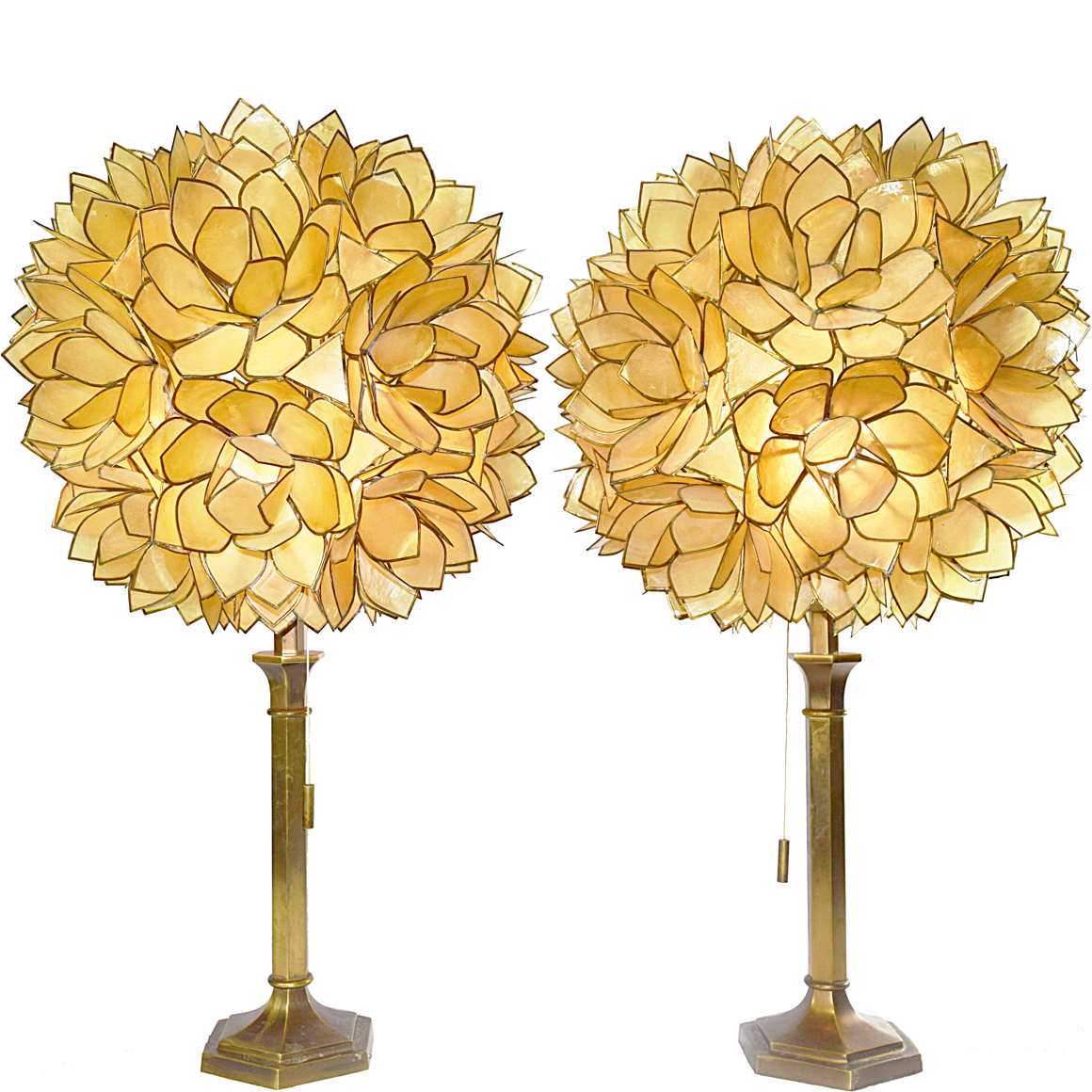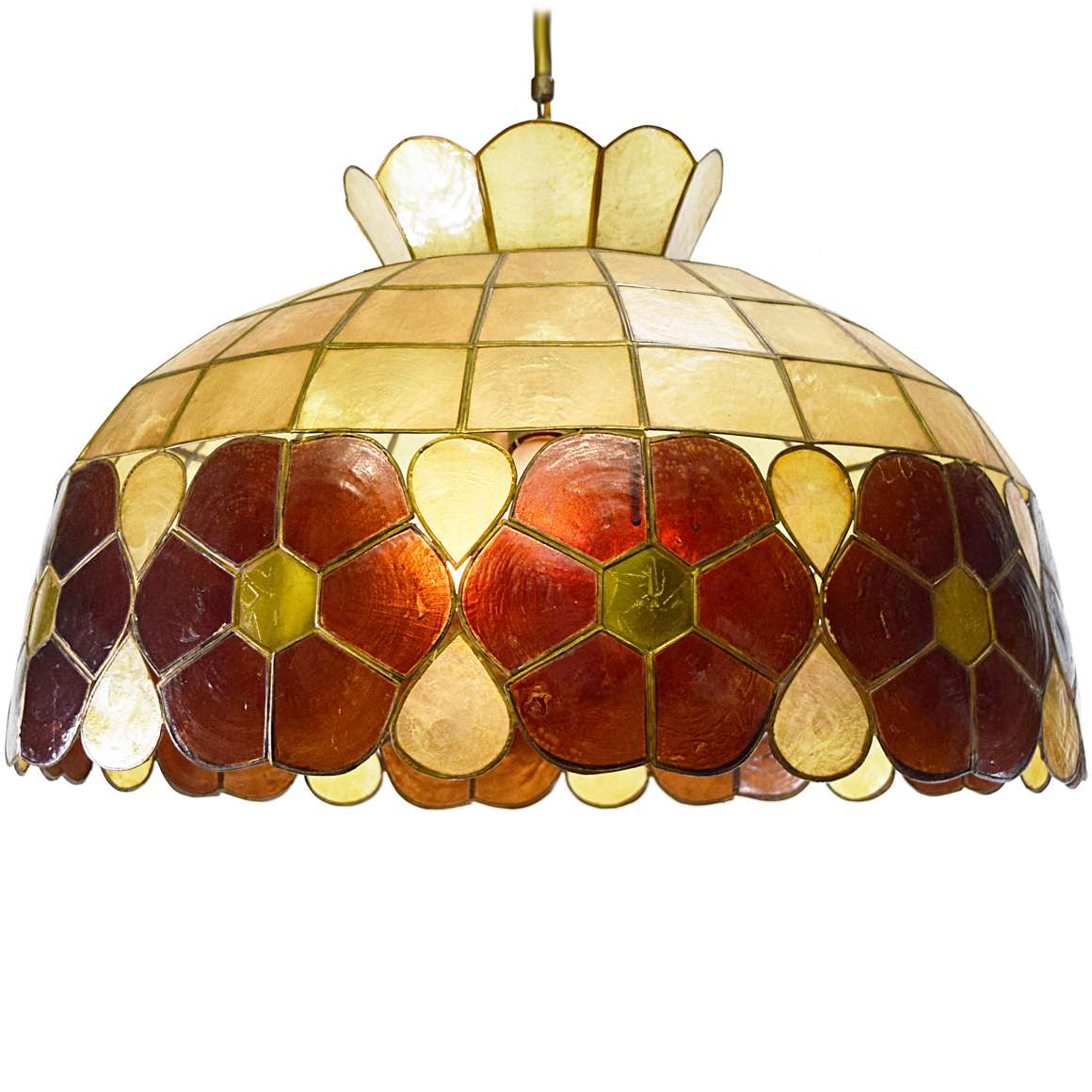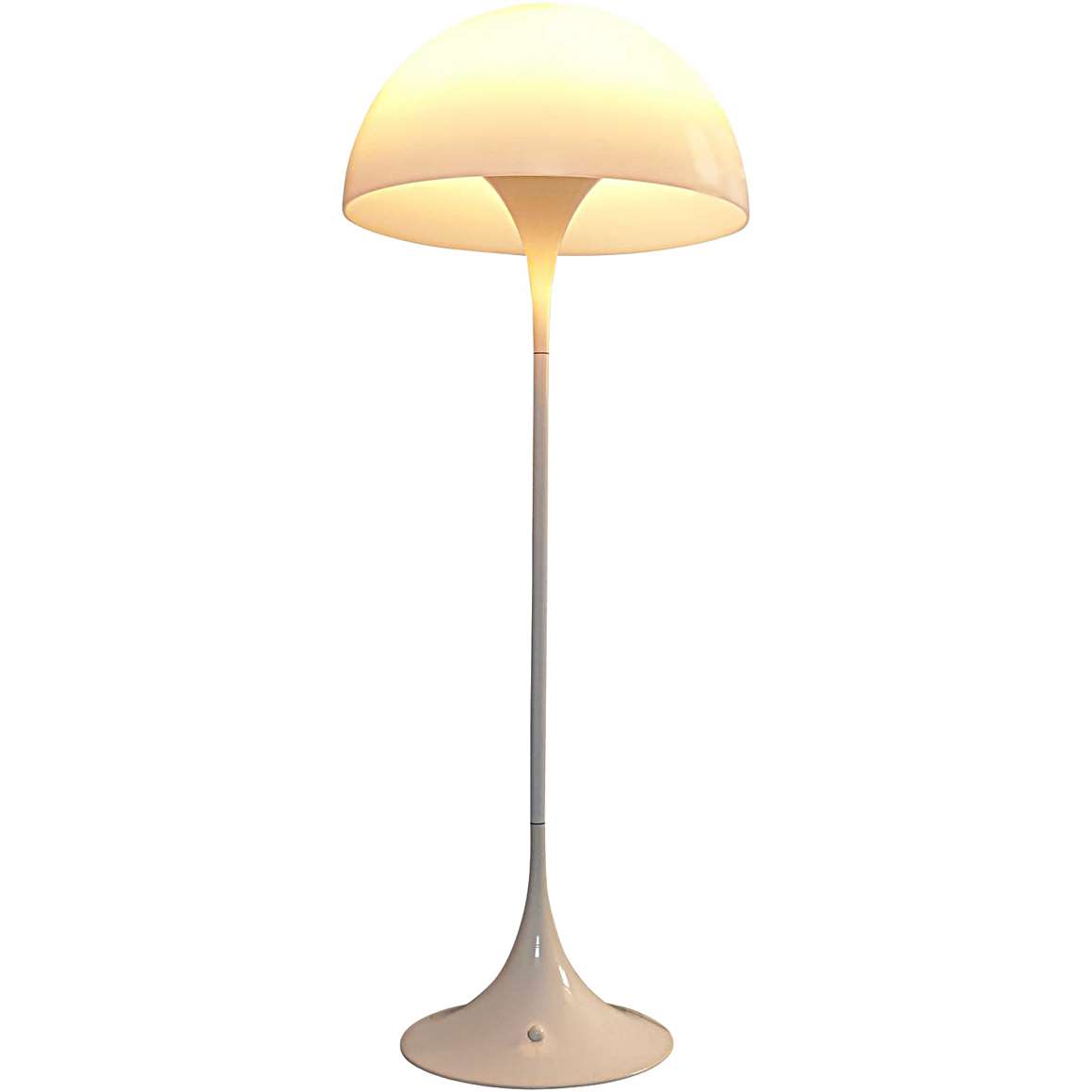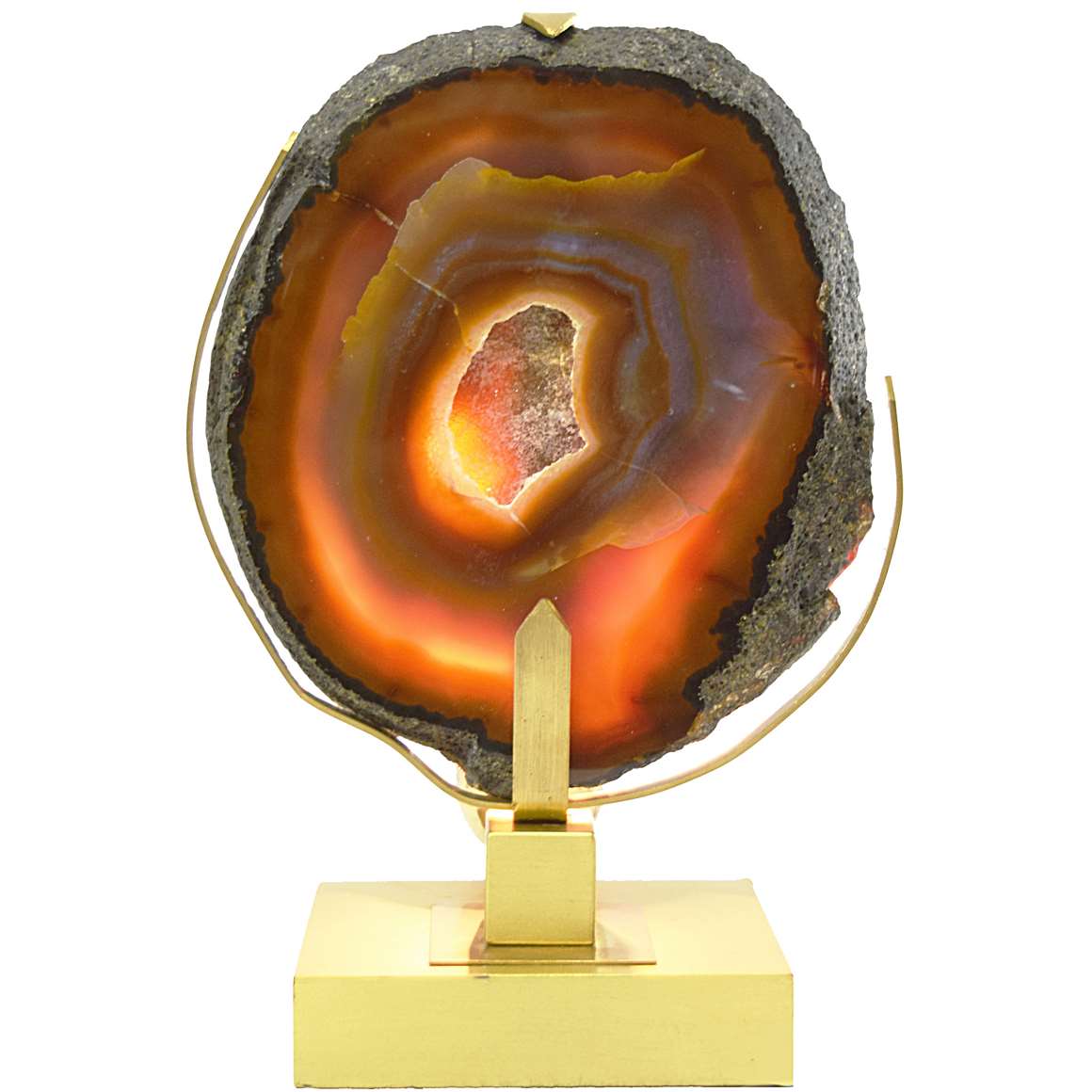An artisan in the Philippines creating flowers for these lights
Links (external links open in a new window)
Fair Trade Capiz Shell: A Love Letter
Elevita’s capiz shell cooperative in the Philippines.
Capiz – Wikipedia – The province
Verner Panton Fun chandeliers – Verpan website
Vintageinfo
Verner Panton Fun 0DM & 1DM pendant lamps
Verner Panton Fun 1TM table lamp
Capiz Flower Globe Chandelier
Materials: Big round globe lampshade made of shells from the windowpane oyster. Soldered together on a thin brass and iron wire frame. Metal E27 socket.
Chain Length: 80 cm / 31.49’’
Height: ∅ 60 cm / 23.62”
Width: ∅ 60 cm / 23.62”
Electricity: 1 bulb E27, 1 x 100 watt maximum, 110/220 volt.
Any type of light bulb can be used. Not a specific one preferred.
Period: 1900s until now, this one is from the 50s or 60s.
Designer: To be appraised.
Manufacturer: Rausch Leuchten – attributed.
Other versions: This Capiz flower globe chandelier or pendant lamp exists as a flush mount, a table lamp and a wall lamp. These lamps exists in many forms and sizes. You can find several lamps here on Vintageinfo.
The pieces of shell having brass edging and they are cut as flower petals.
Rausch
Capiz lamps were among others, sold by the Rausch company from Germany. Unfortunately no information can be found about it.
Willy Daro
These type of lamps are often attributed to the Belgium artist Willy Daro, but they are not. They were in production long before he was born. These lamps are made in the Philippines, in the eponymous province of Capiz. His company never sold similar lamps.
These Capiz lamps were sold by many lighting companies in Europe, mainly in the sixties. In Germany these lamps were sold by Rausch. They became very popular thanks to Verner Panton who used these shells for the FUN chandeliers he designed in 1964 for the Lueber company from Switzerland. Flower chandeliers such as this one were made long before.
Shells
The shells (Placuna placenta) have been used for thousands of years as a glass substitute because of their durability and translucence.
The windowpane oyster used for these lamps are often called “mother of pearl “, but that is a different shell. Mother of pearl is “nacre ” and it is the inside of another shell and it is not translucent. The outside of a pearl is from the same organic material. The outer layer of pearls and the inside layer of pearl oyster is made of nacre.
